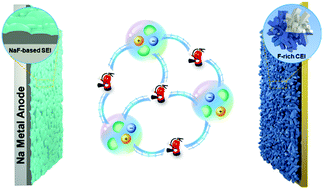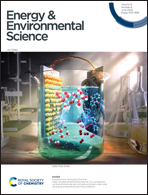Bridging the immiscibility of an all-fluoride fire extinguishant with highly-fluorinated electrolytes toward safe sodium metal batteries†
Abstract
Room-temperature sodium metal batteries with metallic Na anodes and flammable organic solvent-based electrolytes are breeding severe safety concerns. Herein, by introducing non-flammable, highly-fluorinated ethers as bridge solvents, we enable superior miscibility of an all-fluoride fire extinguishant into fluorinated carbonate electrolytes. Besides the intrinsic non-flammability of the designed electrolyte, the embedded PFMP extinguishant further enhances the battery safety by its efficacy to in situ dissipate the internal heat at an elevated temperature (ΔH = +88.1 J g−1). Moreover, the cyclability is greatly improved by using such an electrolyte. The Na/Na symmetrical cells can cycle for 1100 h at 1.0 mA h cm−2 and more than 800 h at 5.0 mA h cm−2. Paired with a high voltage Na3V2(PO4)2O2F cathode, the full cell exhibits a high initial coulombic efficiency of 94.7% and a capacity retention of 87.1% after 1000 cycles at 0.5C, which is mainly ascribed to the thin F-rich interphases established on both the Na metal anode and the cathode.



 Please wait while we load your content...
Please wait while we load your content...